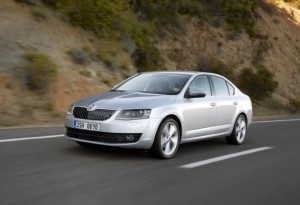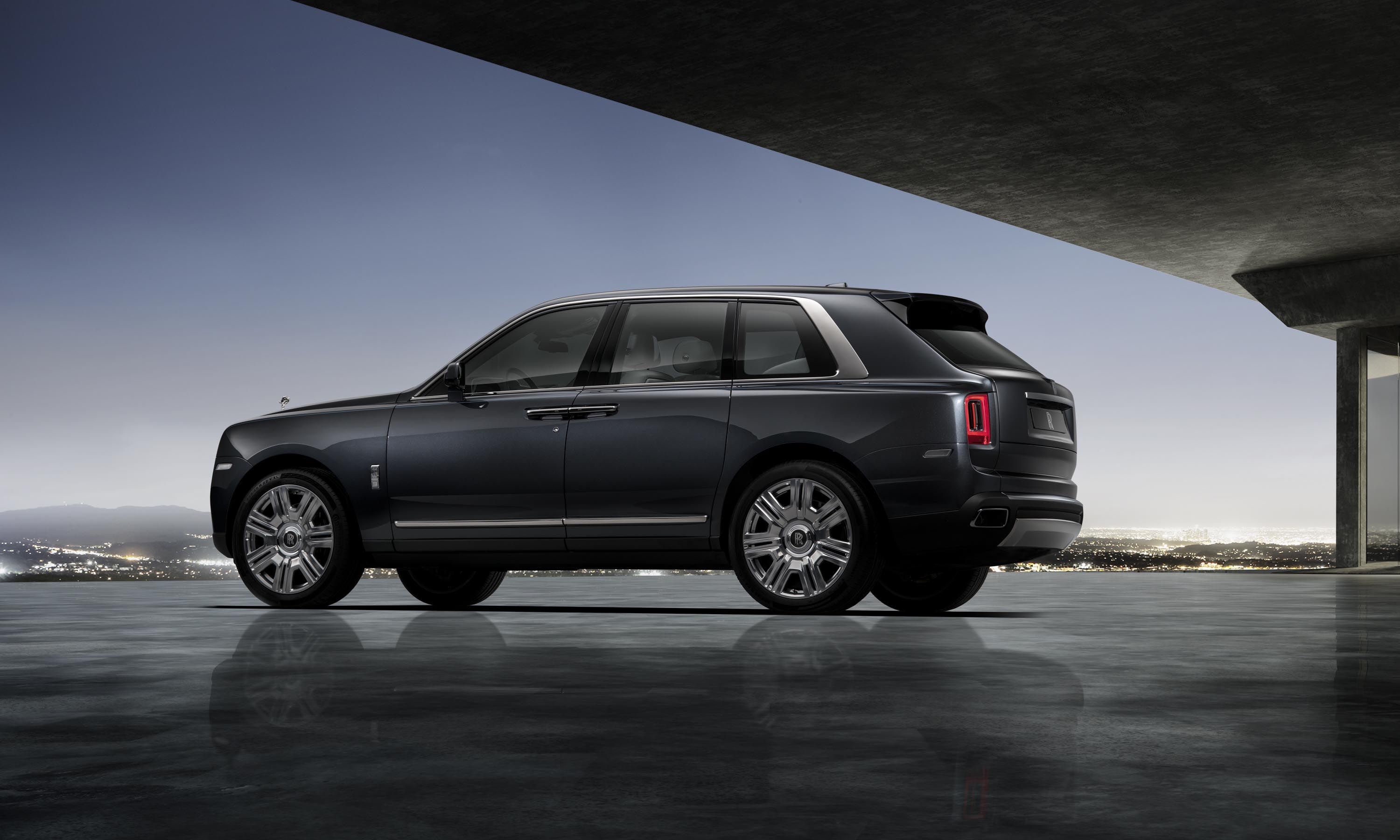- MOST ECONOMICAL ŠKODA OCTAVIA EMITS ONLY 89 G CO2/KM, EQUIVALENT TO A MILEAGE OF 3.4 L/100 KM
- EFFICIENT AND POWERFUL: EIGHT DIESEL AND PETROL ENGINE VERSIONS AVAILABLE FOR THE OCTAVIA – FROM THE 63 KW 1.2 TSI WITH TO THE 132 KW 1.8 TSI
- GREENLINE VERSION WITH 1.6 TDI/81 KW: TOP VALUE OF ONLY 89 G CO2 EMISSIONS PER KM
- START/STOP AND BRAKE ENERGY RECUPERATIONAVAILABLE FOR ALMOST ALL ENGINES
27/12/2012.- The third generation of the ŠKODA Octavia uses a newly developed generation of modern petrol and diesel engines. Compared with their predecessors, fuel consumption and emission values of the engines are lower by up to 23 percent. All in all, there will be eight engine versions available: four TSI petrol engines and four TDI common-rail diesel engines.
The range of available engines for the new ŠKODA Octavia includes eight units, from the 1.2 TSI/63 kW to the top performance engine, the 1.8 TSI with an output of 132 kW. An economical GreenLine version is on offer too. A natural gas version as well as a sporty Octavia RS are in the pipeline. The GreenLine sustainable version of the new Octavia, a 1.6 TDI with a power output of 81 kW, has a CO2 emission value of only 89 g/km and uses less than 3.4 litres diesel for 100 km. In EU countries, all engines – except for the basic engines -come standard with a start/stop system and brake energy recovery via the starter generator (Green tec/GreenLine models). Transmissions include modern manual gearboxes and the automatic DSG double-clutch transmission.
Four Petrol Engines with 63 to 132kW
The petrol engines in the new ŠKODA Octavia are all turbocharged and direct-injection TSI engines with a four-cylinder, four-valve layout.
The entry-level petrol engine of the Octavia is the 1.2 TSI with 63 kW (86 hp) with a combined-cycle fuel consumption of 5.2 l/100 km and CO2 emissions of 119 g/km. Turbocharging produces a maximum torque of 160 Nm (at 1,400 to 3,500 rpm). This entry-level engine comes with a manual 5-speed transmission.
The improved performance version of the 1.2 TSI Green tec, which includes a start/stop system and brake energy recuperation, manages an output of 77 kW (105 hp) and is even more economical with a combined-cycle fuel consumption of 4.9 l/100 km and CO2 emissions of 114 g/km. The TSI engine provides a maximum torque of 175 Nm at between 1,400 and 4,000 rpm. As an alternative to the manual six-speed, the engine can be ordered with an automatic DSG seven-speed transmission.
The 1.4 TSI Green tec with 103 kW (140 hp) can be combined with a manual six-speed or an automatic DSG seven-speed transmission. Fuel consumption of the 1.4 TSI is 5.3 l/100 km and CO2 emissions are 121 g/km in combination with manual transmission and start/stop technology. The engine achieves its maximum torque of 250 Nm at 1,500 to 3,500 rpm.
The highest-performance petrol engine for the Octavia is the 1.8 TSI Green tec with 132 kW (180 hp). Maximum torque of 250 Nm is available between 1,250 and 5,000 rpm. In combination with a 7-speed DSG direct shift gearbox, combined-cycle fuel consumption is 5.7 l/100 km and emissions are 131 g CO2 per kilometre.
TDI Diesel Engines with up to 320 Nm
All diesels available in the new Octavia are turbocharged TDI direct injectionengines with four cylinders and four-valve technology.
The entry-level diesel engine for the new Octavia is the 1.6 TDI with 66 kW (90 hp), with a combined-cycle consumption of 4.1 l/100 km and emissions of 109 g CO2 per kilometre.
Fuel consumption of the 1.6 TDI Green tec with 77 kW (105 hp) with start/stop and manual five-speed transmission is 3.8 l/100 km and CO2 emissions amount to 99 g/km. The engine delivers a maximum torque of 250 Nm at between 1,500 and 2,750 rpm. In addition to the manual gearbox, this engine can also be ordered with the automatic DSG seven-speed transmission.
The GreenLine-Version 1.6 TDI with 81 kW (110 hp) is the most economical diesel engine, emitting only 89 g/km CO2 and a fuel consumption of only 3.4 l/100 km. It is available with a manual six-speed transmission.
The most powerful diesel engine for the new Octavia is the 2.0 TDI Green tec with 110 kW (150 hp). This high-performance engine with a six-speed DSG achieves excellent environmental values with a fuel consumption of only 4.5 l/100 km and CO2 emissions of 119 g/km. In addition, the engine impresses with its outstanding smooth running characteristics and makes its maximum torque of 320 Nm available at as low as between 1,750 and 3,000 rpm. Customers can choose between a six-speed manual and an automatic DSG double-clutch transmission.
Technology Highlights of the new Generation of Engines
The petrol engines of the new Octavia belong to Volkswagen Group’s EA211 model series. These TSI four-valve four-cylinders set new standards regarding energy efficiency, lightweight design and pulling power. Reduced internal friction and weight as well as optimised thermal management provide for up to 23% lower fuel consumption and emissions.
The EA211 engines are a completely new development. Compared to its predecessor the EA111, the EA211 series is significantly more compact, withinstallation length 50 mm shorter, thus offering more interior space. The installation position of the engines has also been optimised. Just as in the diesels, the petrol engines are now mounted with the exhaust side facing backwards and tilted at an angle of 12 degrees.
The weight of these petrol engines made of die-cast aluminium is only 97 kg for the 1.2 TSI and 106 kg for the 1.4 TSI. Compared to the EA111 predecessor engines used in the Octavia, this is a reduction of up to 22 kg. The crankshaft alone became lighter by 20 percent; the connecting rods lost 30 percent of their weight. In addition the connecting rod bearing journals are now hollow-drilled and pistons now come with flat bottoms, all of them optimised for lower weight.
Regardingthermal management,the EA211 petrol engine is equipped with a modern dual-circuit cooling system. That means that a high temperature circuit with a mechanically driven cooling pump cools the basic engine, while a low temperature circuit flows through the intercooler and the turbo-charger casing. The cylinder-head circuit heats the cabin’s interior. The exhaust manifold is integrated into the cylinder head, enabling the engine to warm up more quickly, in turn making heat available quickly for the passenger cabin. At high loads, the exhaust is cooled by the coolant, lowering fuel consumption.
The particularly economical diesel engines are from the EA288 model series. Compared to the previous generation, the fuel consumption of the new engines is lower by up to 0.8 l/100 km. Exhaust-relevant components, such as the injection system, the charging and the intercooling systems have been improved. Components for exhaust-gas aftertreatment, such as the oxidation catalyst and the diesel particulate filter, are now located closer to the engine. Piston rings with a lower pretension and particularly low-friction roller contact bearings are used for the camshaft to reduce friction in the engine.
The new diesel engines also feature innovative thermal management. During the warming-up phase of the engine, separate circuits cool the cylinder head and the engine block, enabling the engines to reach their operating temperature much faster and the interior warms up much more quickly in winter.
More information:
Text and photograph by: ŠKODA.







